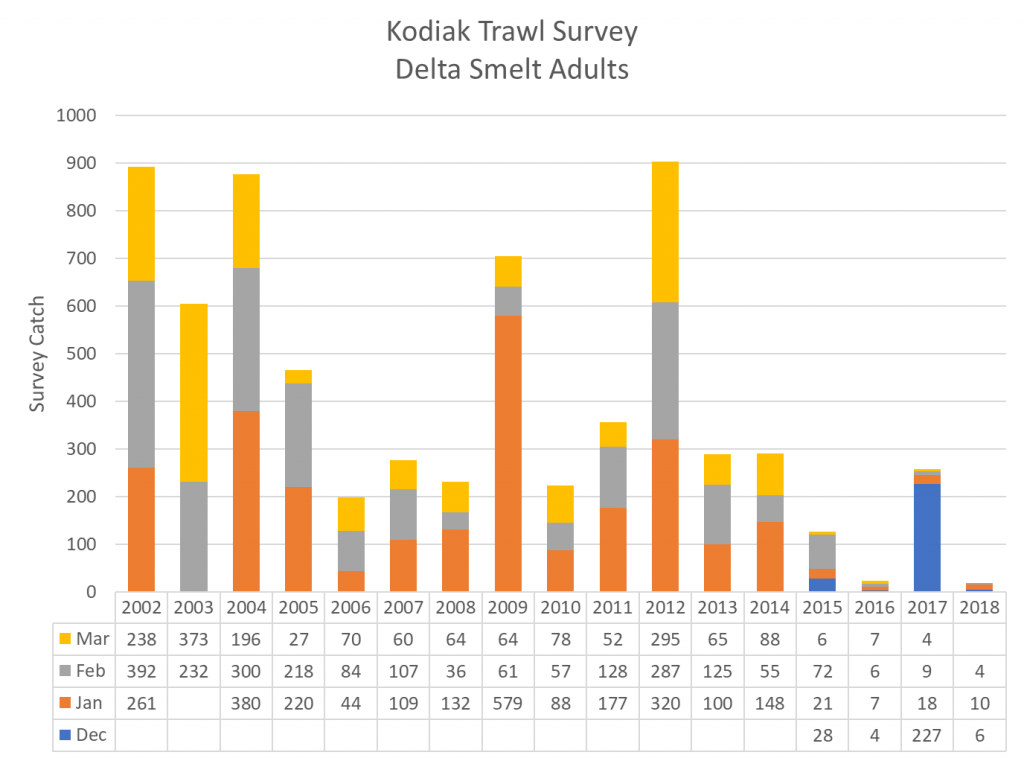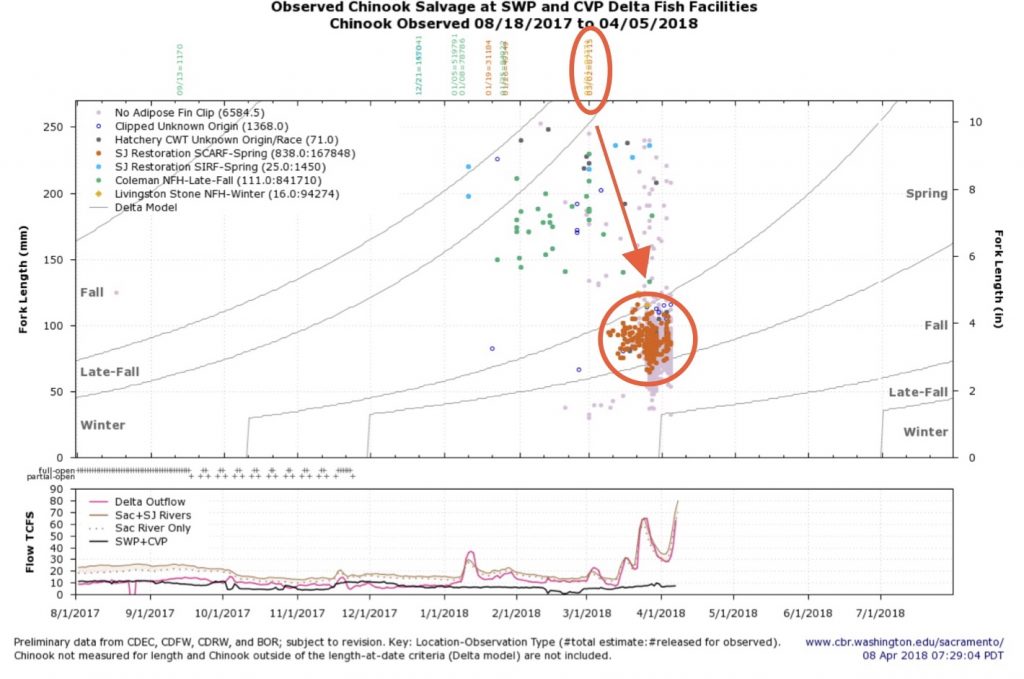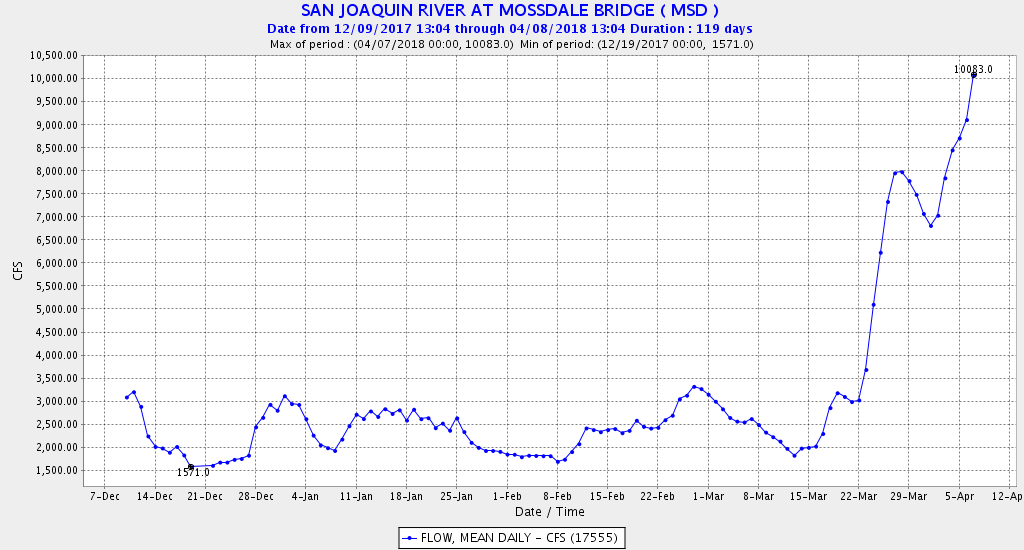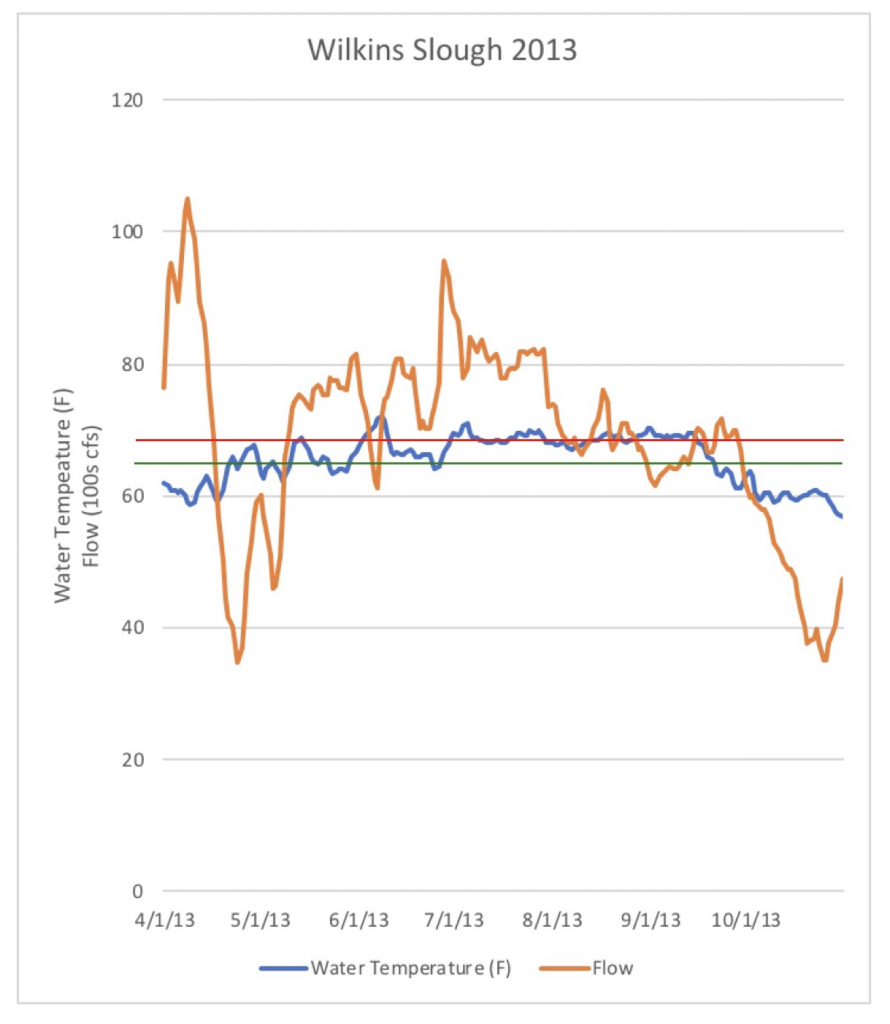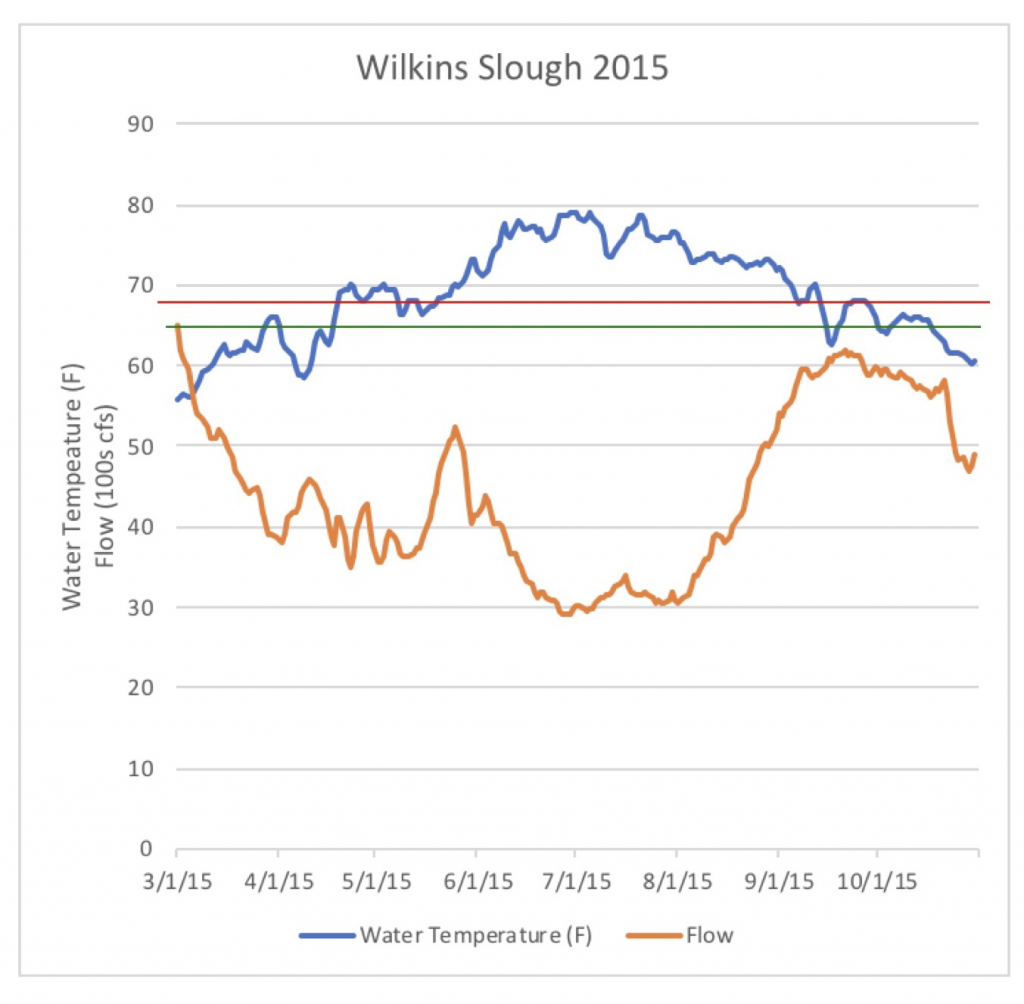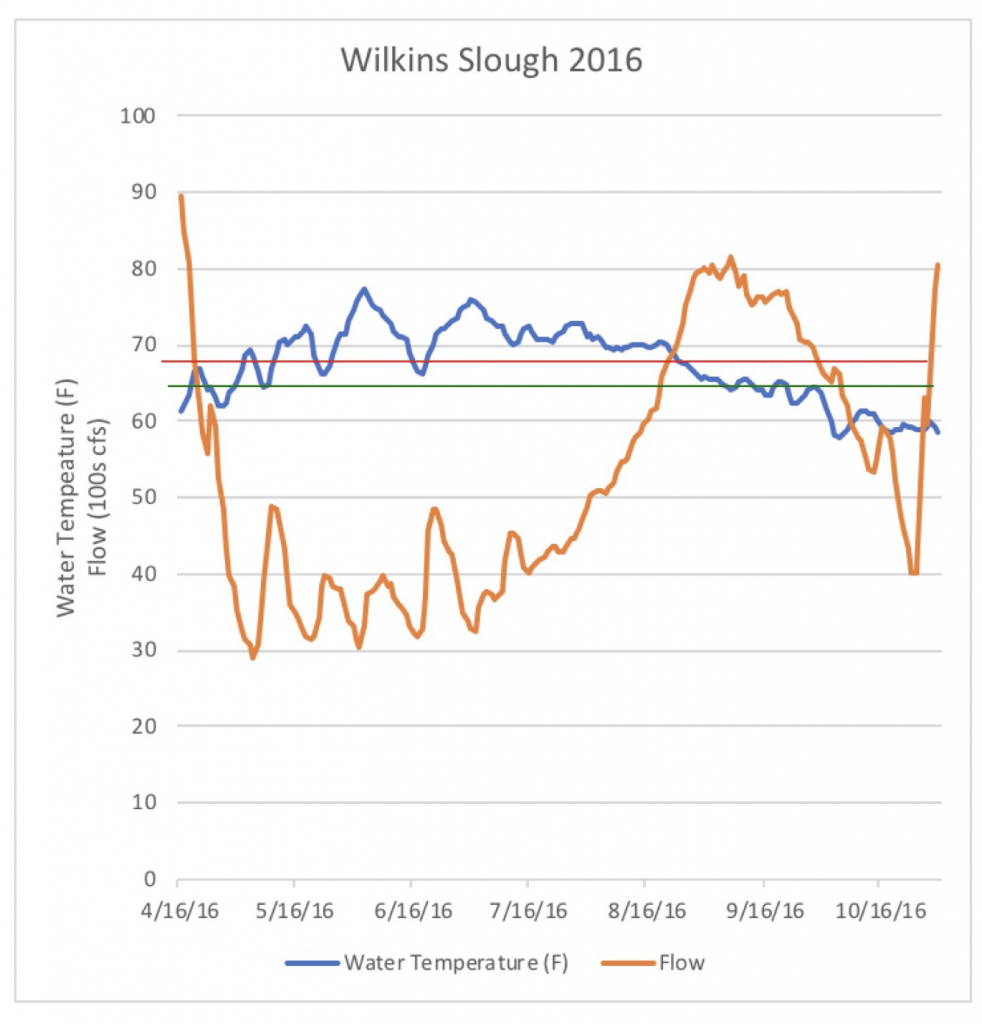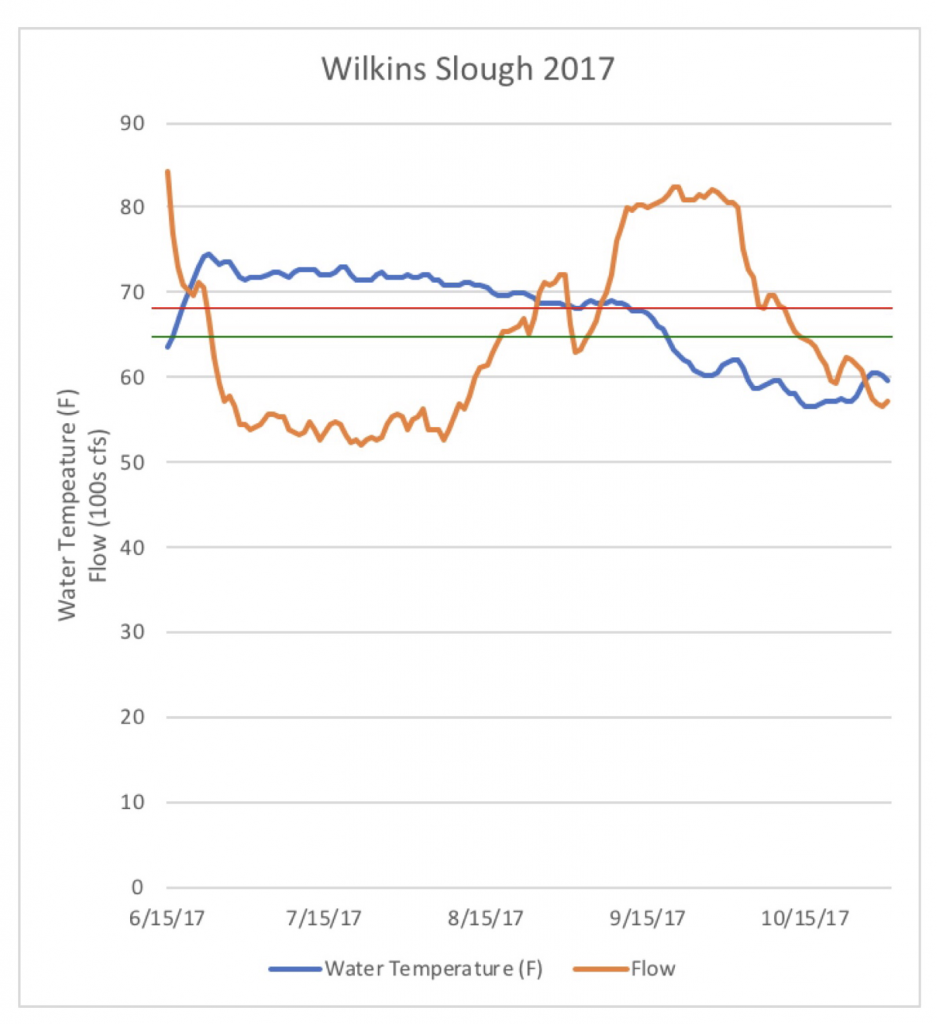There appears to be little doubt that trucking Coleman (Battle Creek) Hatchery fall run salmon smolts to San Pablo Bay pens for release during the recent 2013-2015 drought provided near five-fold higher survival (and fishery catch) than releases at the hatchery (Figure 1). Standard late April to early May releases to the Bay net pens resulted in returns of about 1%, as compared 0.1-0.3% for releases at the hatchery. With Coleman Hatchery smolt releases at 10-12 million per year, the difference in release strategy amounts to tens of thousands of adult salmon produced in critical drought years.
The problem with Bay releases is it results in considerable straying of returning Coleman hatchery adult salmon to other Central Valley rivers and hatcheries. Comparison of returns from several groups of brood year 2013 releases from Coleman and the Bay is shown in Table 1. A four-to-five- fold higher return to the fisheries is evident for the Bay releases, as is a 90% reduction in Coleman Hatchery returns. The return of Coleman fish to other hatcheries is an added problem in that the Coleman fish returned earlier. This was fortunate for Coleman hatchery, because some of the eggs from these fish were shipped to Coleman. It also indicates there may be some environmentally-derived genetic differences in the fall run of Central Valley rivers.
Table 1. Comparison of Coleman Hatchery tag recovery numbers from 400,000 smolts released at the hatchery and trucked to the Bay for brood year 2013 fall run salmon. Data source: http://www.rmis.org/.
| RECOVERY LOCATION | COLEMAN RELEASES (400,000 tags) |
BAY RELEASES (400,000 tags) |
| Nearby San Francisco Ocean | 68 | 279 |
| Central Valley Rivers | 25 | 138 |
| Coleman Hatchery | 629 | 76 |
| Other Hatcheries | 3 | 204 |
These results beg some real questions. Can the Coleman Hatchery get enough eggs to meet production goals? Is the straying to other rivers and hatcheries a problem or perhaps a benefit? Is the greater return to fisheries from Bay releases worth the effort and problems resulting? Are there other actions that might resolve some of the problems, and perhaps increase survival to the 3-to-5 % level of wetter years?
It appears that Coleman was able to raise only 6 million fall-un smolts to release in April-May 2018 (normal release is 12 million) because of the shortage of eggs. These smolts are likely slated for release at the hatchery to minimize future egg shortages.
With the irrigation season starting, storm and snowmelt flows declining, and the arrival of warm, dry weather, these hatchery smolts will need a boost to help them get over two hundred miles from Battle Creek near Redding to the Bay and ocean. With flows already too low (Figure 2) and water temperatures too high (Figure 3), the young salmon need a pulse of cold Shasta Reservoir water. There is plenty of water in Shasta Reservoir for this. Shasta will fill (4.5 million acre-feet) in a few weeks. It is filling at a rate of more than 10,000 acre-feet per day in mid-April. A pulse of three thousand added cfs to the Sacramento River for ten days amounts to 60,000 acre-feet. The added water should be passed through the Delta to the Bay. I hope this is an element of the plan to recover the Sacramento River fall-run salmon from the 2016-2017 crash.
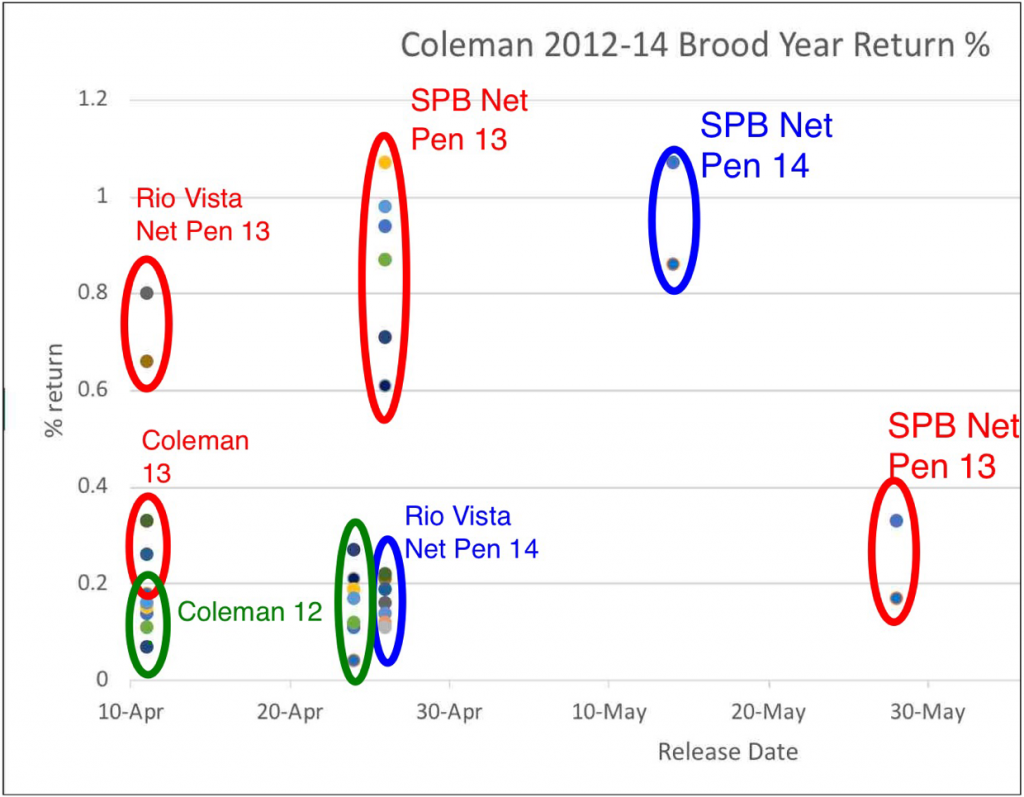
Figure 1. Survival rates (% return) of Coleman Hatchery smolts (brood years 2012-2014) released at various locations in April-May of 2013-2015 drought. “SPB” denotes San Pablo Bay. Data source: http://www.rmis.org/.

Figure 2. Lower Sacramento River flow at Wilkins Slough (river mile 125), April 12-22, 2018. Flows below 8,000 cfs lead to excessive lower river water temperatures (>65°F).

Figure 3. Lower Sacramento River water temperature at Red Bluff, April 12-22, 2018. The water temperature maximum-daily-average standard at Red Bluff (river mile 243) is 58°F.

